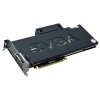Intel Preparing Broadwell Launch For CES January 2015, Skylake Launch To Follow
-
Featured Topics
-
Topics
-
0
-
0
-
VinSen ·
Posted in New Builds and Planning0 -
1
-
Fahizzle ·
Posted in CPUs, Motherboards, and Memory0 -
6
-
INotPablo ·
Posted in CPUs, Motherboards, and Memory1 -
nugget1414 ·
Posted in General Discussion0 -
2
-
KN923 ·
Posted in Troubleshooting1
-







.thumb.jpeg.9babd505c85c11addf31a285a02547cc.jpeg)








Create an account or sign in to comment
You need to be a member in order to leave a comment
Create an account
Sign up for a new account in our community. It's easy!
Register a new accountSign in
Already have an account? Sign in here.
Sign In Now